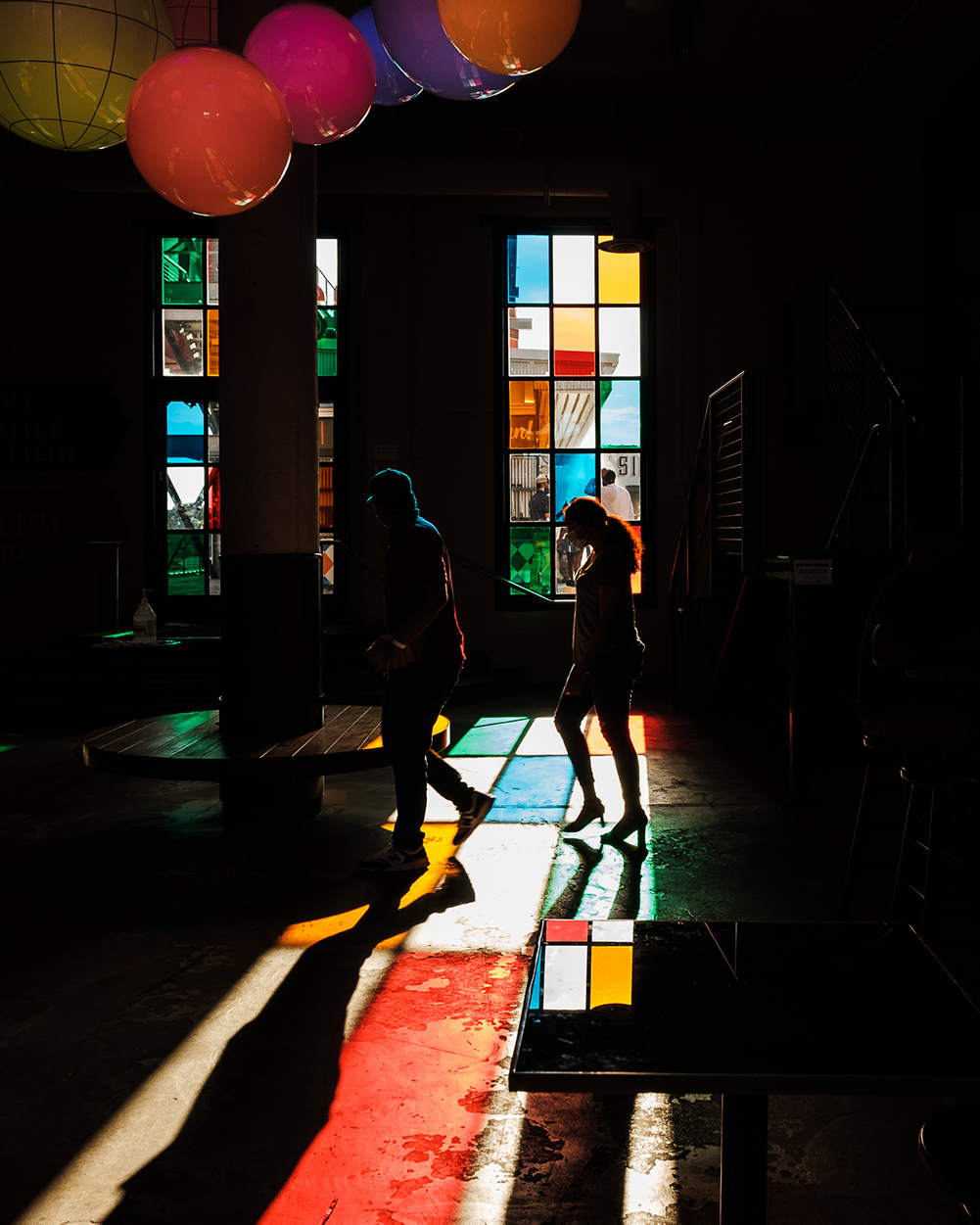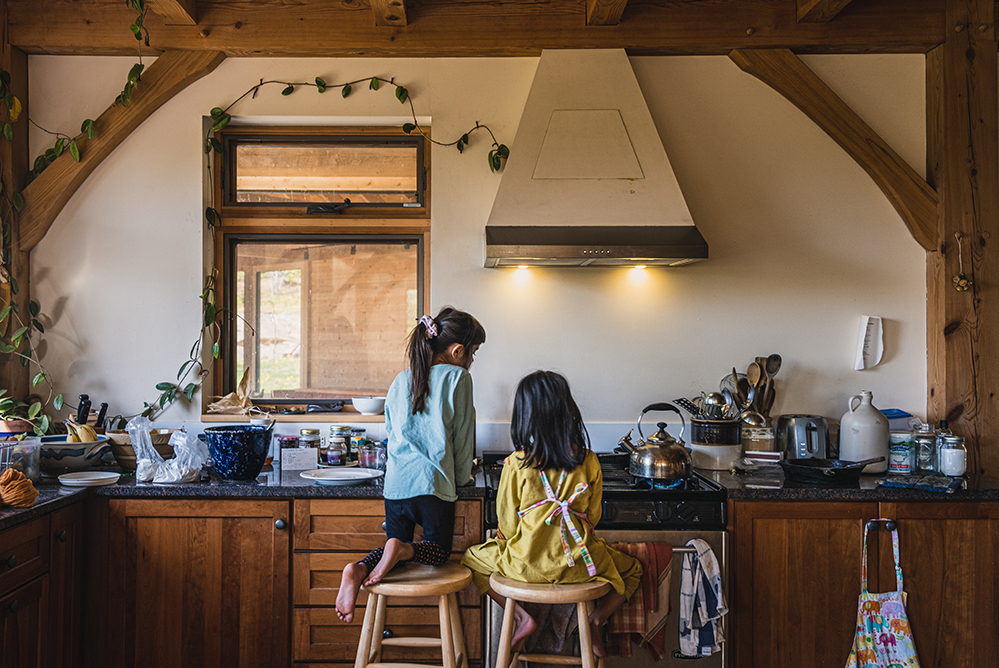 Students of Storytelling
Students of Storytelling 
Fujifilm Students of Storytelling: Tiffiany Peters Re-Humanizes the Homeless, One Vet at a Time
September 29, 2020
Viking. For Trystin, a homeless Veteran, the day he bought his drum and started busking (one of his favorite ways to make a little extra cash), was the day he was able to get lost in the music and do a reset. Trystin is now at a place in his life that he would like to start planting some roots and finding a home. He is no longer homeless, he is home free. Living home free is a mindset that not everyone living on the streets has or will achieve. Photographed on a Fujifilm X-T3 camera with a 16-80mm f/4 R OIS WR lens.
Homelessness is something that many people have probably witnessed—or even experienced—in one way or another at some point in their lives. Photographer Tiffiany Peters recently turned her lens on homeless veterans because, as a veteran herself, it is something she says she can do to “help my fellow brothers and sisters in arms who might be struggling.”
Peters recently won the Fujifilm Students of Storytelling competition for her project focusing on veterans who have found themselves homeless at one time or another. With each subject, Peter dives deep into conveying the story behind their homelessness.
Fujifilm created the contest to identify the next generation of U.S. storytellers, and to provide them with Fujifilm X Series or GFX System gear to bring their vision to life.

Rangefinder: What interests you as a storyteller? Which stories are you drawn to?
Tiffiany Peters: I think what interests me most as a storyteller is sharing other peoples’ stories. Everyone has a story to share and a past to reveal to others. Some people don’t like to share their stories or they just haven’t been asked the right questions yet. I would have to say that I am drawn to the survivor stories, the kind of stories that have struggle and heart ache but the character overcomes and makes it out on top, or they fight hard for what they have.
Rf: What stories do you want to share through your work?
TP: Currently, I’m sharing stories of veterans who have found themselves homeless at one time or another in their lives. I’m hoping to re-humanize them in the eyes of the outsiders and naysayers. Mental health is, in many cases, the reason behind their homelessness, and if people begin to understand that then maybe they will not look down upon and judge.

From 2015-2018, Trystin carried a 6 x 8-foot tarp and a sleeping bag as part of his gear. He has slept under the stars from the east coast to the west coast, from the north to the south. Fallen to sleep to the sounds of waves crashing, wolves howling, crickets chirping, and owls hooting. Listening to the rustling of the leaves as the trees dance in the wind that’s blowing around him. Upon asking where his favorite place of all time would be without hesitation he said “The Redwoods, I slept in a standing 500-year-old (or older) Redwood tree.” Photographed on a Fujifilm X-T3 camera with a 16-80mm f/4 R OIS WR lens.
Rf: Describe the evolution of your style and approach. How has it changed over time?
TP: My style and approach is evolving all the time. When I first started taking photos seriously, they were very abstract, unorganized and, more often than not, inanimate. I would avoid doing portraits and focus on anything that didn’t move so I didn’t have to fumble with the exposure. I was always very nervous working with people because my confidence level wasn’t where it needed to be. What I was producing was very much what you would expect from a newbie.
As I started getting comfortable with my camera and moving it out of auto mode, I started seeing my images improve. Now I start creating images in my mind and bring them to life through my lens. It has been an incredible thing to watch happen. Getting out of my comfort zone has been an amazing experience. I began looking at other photographers and following different social media accounts to get inspiration. I began to look at photography differently. I came across a photographer named Lee Jeffries and his portraits of homeless individuals. I love how raw his images are and how honest the subjects seem. And the stories that he shared with each image was heartbreaking. That inspired me to create a series about homeless veterans.


Rf: What are the key things you have learned or done that have helped you advance your career since you began shooting?
TP: I am still learning, but this process has really improved my self-confidence. I try to soak up as much knowledge as I can with every opportunity that I have to learn from someone in photography. I have always learned best by doing, so I try to apply that knowledge to my next shoot. Being a part of this Students of Storytelling project with Fujifilm has been such an amazing step to help advance my career and I have learned so much from their team. The key thing I’ve learned that has helped me is learning how to shoot in manual mode. Learning how the aperture, shutter and ISO all work together has helped improve the quality of my images.
Rf: What is the most helpful piece of advice you’ve received and followed?
TP: The best advice that I have ever received is to not be too hard on myself. I’ve been told this by several people. I have definitely been my hardest critic, and I think I always will be.

Rf: How did you meet your subjects?
TP: Honestly, all I’ve had to do is to introduce myself and tell them what I’m working on. Most of the time, they are all for my idea and willing to let me take photos. If they are not interested, then we part ways and move on.
Rf: How do you build trust with your subjects?
TP: To build trust with my subjects, I start by telling them a little about myself. It’s usually just a casual conversation. Then they begin to share more about themselves. When I’m interviewing them, I try to ask the basic questions to start: Where are you from? What do you do? But with the project I’m working on now, the questions can be harder to answer. When you start talking about PTSD, depression, suicide attempts, losing everything, living on the streets; those topics can be a little harder to open up about. I reassure them that I am not here to judge them; I’m only here to help share their stories. Then they typically feel more comfortable. Being a veteran, in many cases, you are looked up to. But when you are a homeless veteran, you don’t receive that same appreciation. So when I’m with these individuals, I treat them like the humans they are. I don’t pity or feel sorry for them. I offer a way to share their stories, and if they are seeking help, I offer information to an amazing organization that helps veterans in these types of situations.

Rf: How have your studies affected your approach to photography and storytelling?
TP: My studies are the reason I fell in love with photography, and it has enhanced my storytelling. I took my first photography class in 2017 and I was instantly hooked. My school only offered two photography classes, but I wish they had more.
Rf: Can you tell us about your submission to Fujifilm’s Students of Storytelling program? How did you come up with the project?
TP: Thanks to my design instructor, Joseph, this became a reality. He emailed me the link to the contest and told me he thought my homeless veterans’ series would make me a great candidate. I was blown away by his suggestion for me to enter the contest. I had never submitted any of my work anywhere before. My submission for Fujifilm’s Students of Storytelling project is called “Re-Humanizing the Homeless, One Veteran at a Time.” It has been an idea I had been thinking about doing for almost a year now. In February, I started the project as a photo essay for my Project in Digital Media class. I wanted to create a series that meant something and that would have an impact on more than just myself. Homelessness is something that every country is dealing with and that most people have probably witnessed in some way or another. My current focus is on veterans because as a veteran myself, I think it is something I can do to help my fellow brothers and sisters in arms who might be struggling.
Rf: What works have you produced with your new Fujifilm systems?
TP: Let me start off by saying that I am completely in love with the system that Fujifilm sent us. The quality of the images that are being produced is amazing. I was not getting the same quality with my old setup. I’m currently still working on the “Re-Humanizing the Homeless, One Veteran at a Time” series with my X-T3. The images I have posted so far are of a Marine and Army vet that chose to live the life of a nomad and the struggles he has had while on the streets. The next person I will be introducing is a Marine vet that didn’t believe PTSD was real until he found himself talking with Marines that were killed in action. He found himself high on meth, homeless and contemplating suicide. He lost everything. Now he is the founder and operator of a nonprofit that is finding solutions to house homeless veterans.
Rf: Where do you see your work going from here?
TP: Until recently, I never imagined my work leaving my little town, and only being viewed by my few followers on social media. This is a dream that I never expected to come true. I would love to continue the work I’m doing and share these stories. If my images and the stories that are connected to them were to help save someone from walking in the footsteps of my subjects, then I would feel as if my work has done what it was intended to do. Creating something that is bigger than myself. Creating images that the subject and I can both be proud to share with the world.
Rf: Which brand, media outlet or agency is your ideal client?
TP: I would love to work with the veteran agencies that are helping veterans make it in the civilian world and that are focused on physical and mental health rehabilitation.
Visit the official Fujifilm Students of Storytelling site for more information about the complete program. Follow @tiffiany.peters to stay up to date with Tiffiany Peters.





